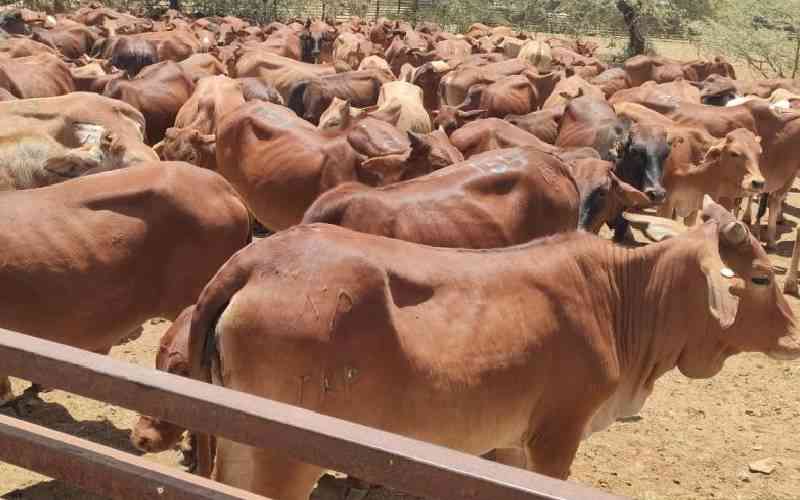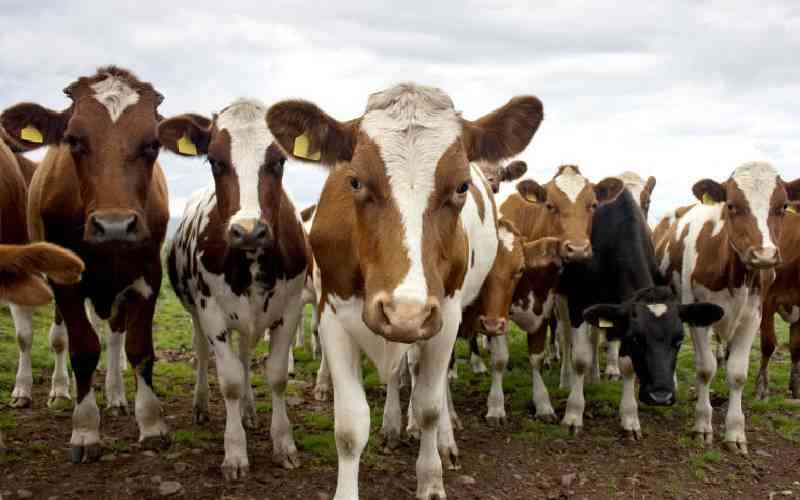Last week, I went to Rift Valley and made an interesting observation on the grazing behaviour of many livestock farmers. Due to the drought conditions and feed scarcity, they are allowing their cattle to feed near swamps.
As vets, we always advise as part of herd health that such areas if in a farm or a ranch should be fenced off to keep away cattle and thus control fasciolosis (infestation with flukes). But such caution is thrown out of the window during drought seasons when feed is scarce.
Swampy or stagnant waters are a habitat of many internal and external parasites, disease hosts and disease vectors.
The water is also of poor quality with negative effects on productivity and health of animals.
Disease spreading insects
As drought bites; insects like tsetse flies migrate to such waters. Tsetse fly is a vector for a deadly livestock disease called nagana. This creates a situation of increased livestock and vector contact and hence higher chances of spreading the disease. This is worsened by the fact that these animals’ immune system is already weakened hence contributing to increased disease severity.
So what should the desperate farmer do? A heightened external parasite control plan should be in place for example use of pour-ons that have a long lasting effect will reduce insect populations and hence spread of the disease.
But it is not only insects that move to these swampy areas? Stagnant waters are habitats for snails; these are intermediate hosts for liver fluke. Fasciolosis is a common condition for animals grazing in swampy areas.
Strategic use of flukicides like albendazole can reduce the infestation incidence but it doesn’t persist and cannot control liver fluke re-infestation. Avoidance of swampy sites is thus the only effective control against liver fluke. Fasciolosis can cause deaths if not effectively and timely managed. Your vet will come in handy in designing the strategic deworming.
Apart from liver flukes; leeches – blood sucking flattened worm like parasites can also pose a problem for animals grazing in swampy areas.
Last but not least are the many infectious diseases that can be picked from swampy areas. A disease like Leptospirosis which is also zoonotic can be spread when urine from infected animals contaminates the environment.
Crowding at water sources as happens during drought conditions thus creates favourable conditions for its spread. The causative organism can survive for long periods of time in the environment and it active in warm weather conditions. Fortunately there is an effective vaccine against Leptospirosis in use in the US and Canada, I am not sure about its availability and use in Kenya. Clinical signs of Leptospirosis include yellowing of eyes and mucus membranes, abortions and swelling around the udder.
Closely related to swamps and drought conditions is bracken fern poisoning. This fern is adapted to drought conditions and can remain green even when other plants have dried and thus tempting to hungry ruminants. Bracken fern poisoning is common during drought.
Ingestion of high quantities of bracken fern lives, stem or roots causes anaemia. It can also cause cancer in its chronic form and this is clinically shown by discharge of bloody urine. There is no medical cure for bracken fern poisoning and prevention is the only option.
(The writer is a veterinary surgeon at the Kenya Tsetse and Trypanosomiasis Eradication Council –KENTTEC)
 The Standard Group Plc is a
multi-media organization with investments in media platforms spanning newspaper
print operations, television, radio broadcasting, digital and online services. The
Standard Group is recognized as a leading multi-media house in Kenya with a key
influence in matters of national and international interest.
The Standard Group Plc is a
multi-media organization with investments in media platforms spanning newspaper
print operations, television, radio broadcasting, digital and online services. The
Standard Group is recognized as a leading multi-media house in Kenya with a key
influence in matters of national and international interest.
 The Standard Group Plc is a
multi-media organization with investments in media platforms spanning newspaper
print operations, television, radio broadcasting, digital and online services. The
Standard Group is recognized as a leading multi-media house in Kenya with a key
influence in matters of national and international interest.
The Standard Group Plc is a
multi-media organization with investments in media platforms spanning newspaper
print operations, television, radio broadcasting, digital and online services. The
Standard Group is recognized as a leading multi-media house in Kenya with a key
influence in matters of national and international interest.









